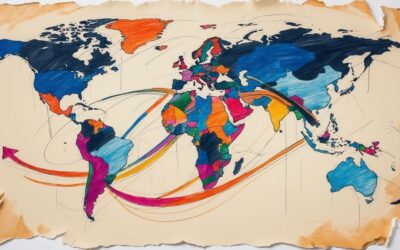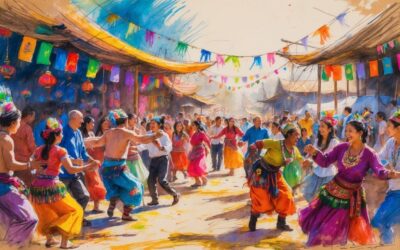Reading for Cause, Effect, and Impact
Welcome to your reading practice session! Today’s passage examines the vital role trade played in the development of ancient societies. Texts exploring historical processes, like those found in SAT, TOEFL, or IELTS exams, often require you to understand cause-and-effect relationships and the broader impact of certain activities.
Here are some focused tips for this type of reading:
- Identify Key Regions and Routes: Pay attention to geographical locations mentioned (e.g., Mesopotamia, Egypt, Silk Road). Understanding the ‘where’ helps contextualize the trade networks.
- Track Goods and Resources: Note the types of goods being exchanged (raw materials, luxury items, food). This reveals motivations for trade and resource distribution.
- Focus on Impact (Cause & Effect): Look for how the passage explains the consequences of trade. How did it affect cultural exchange? Urban development? Political relationships? Signal words like “led to,” “resulted in,” “consequently,” “facilitated” are important here.
- Time Management is Crucial: Historical passages can contain many details. Practice extracting the main points efficiently. Aim to read the text and answer the 10 questions within approximately 18-20 minutes.
Let’s explore how trade shaped the ancient world.
Ancient Trade Routes & Societies (Reading Passage)
Trade, the exchange of goods and services, has been a fundamental aspect of human interaction since prehistoric times. However, the development of organized, long-distance trade networks in ancient civilizations marked a pivotal transition, profoundly shaping their economic structures, social organization, cultural landscapes, and political relationships. Far from being merely an economic activity, ancient trade was a primary engine driving innovation, urbanization, cultural diffusion, and the formation of complex societies across the globe.
The impetus for early long-distance trade often stemmed from the unequal distribution of essential resources. Civilizations flourishing in fertile river valleys, like Mesopotamia and Egypt, might possess agricultural surpluses but lack crucial materials such as timber, stone for building, or metals like copper and tin needed for tools and weaponry. Conversely, regions rich in these raw materials might lack sufficient food supplies. This disparity created a natural incentive for exchange. Early trade routes, both overland via caravan and maritime via shipping lanes in the Mediterranean, Persian Gulf, and Indian Ocean, emerged to connect these disparate regions, facilitating the movement of essential commodities.
Beyond basic necessities, ancient trade routes became conduits for luxury goods, which often held significant social and political value. Items such as spices, incense, precious metals, gemstones, fine textiles (like silk from China), and crafted objects were highly sought after by ruling elites to display wealth, conduct diplomacy, and perform religious rituals. The demand for these high-value, low-bulk items fueled the expansion of extensive networks like the famed Silk Road, which connected East Asia with the Mediterranean world, traversing vast distances and multiple intermediaries.
Crucially, trade involved more than just the movement of physical goods; it was a powerful vector for cultural diffusion. As merchants, sailors, and travelers moved along trade routes, they carried with them ideas, technologies, languages, religious beliefs, artistic styles, and even diseases. The spread of writing systems, metallurgical techniques, agricultural innovations, and major world religions like Buddhism and later Islam across Asia was significantly facilitated by the interactions occurring along trade networks. This cross-cultural exchange spurred innovation and shaped the cultural identities of participating societies in profound ways.
Furthermore, the organization and control of trade often played a critical role in urbanization and state formation. Thriving trade centers emerged at strategic locations – ports, oases, river crossings – evolving into bustling towns and cities with diverse populations of merchants, artisans, and administrators. Controlling lucrative trade routes and taxing goods provided significant revenue for rulers, enabling them to consolidate power, fund armies, and build monumental infrastructure. The competition for control over resources and trade routes could also lead to conflict and shifting political alliances, making trade a key factor in ancient geopolitics. In essence, the intricate web of ancient trade routes not only connected distant societies economically but also fundamentally shaped their internal development and external relations.
Glossary
- Pivotal: Of crucial importance in relation to the development or success of something else. Usage: Organized trade marked a crucial (“pivotal”) transition in ancient societies.
- Impetus: The force that makes something happen or happen more quickly; motivation. Usage: The driving force (“impetus”) for early trade was resource disparity.
- Disparity: A great difference. Usage: The difference (“disparity”) in available resources between regions motivated trade.
- Commodities: Raw materials or primary agricultural products that can be bought and sold, such as copper or coffee. Usage: Trade facilitated the movement of essential raw materials (“commodities”).
- Conduits: Channels for conveying water or other fluid; metaphorically, channels for transmitting something. Usage: Trade routes served as channels (“conduits”) for goods and ideas.
- Vector: (Epidemiology) An organism that transmits a disease; more generally, a quantity having direction and magnitude; a course or direction. Here used metaphorically for a means of transmission. Usage: Trade was a powerful means of transmission (“vector”) for cultural diffusion.
- Cultural Diffusion: The spread of cultural beliefs, items, and social activities from one group of people to another. Usage: Trade was a key driver of (“cultural diffusion”) across ancient societies.
- Metallurgical: Relating to metallurgy, the branch of science and technology concerned with the properties of metals and their production and purification. Usage: The spread of metal-working (“metallurgical”) techniques via trade routes.
- Urbanization: The process of making an area more urban; the increase in the proportion of people living in urban areas. Usage: Trade played a critical role in the growth of cities (“urbanization”).
- Lucrative: Producing a great deal of profit. Usage: Rulers sought control over profitable (“lucrative”) trade routes.
- Consolidate: Make (something) physically stronger or more solid; reinforce or strengthen (one’s power or position). Usage: Trade revenue enabled rulers to strengthen (“consolidate”) their power.
- Infrastructure: The basic physical and organizational structures and facilities (e.g., buildings, roads, power supplies) needed for the operation of a society or enterprise. Usage: Rulers used trade revenue to build monumental (“infrastructure”).
- Geopolitics: Politics, especially international relations, as influenced by geographical factors. Usage: Trade was a key factor in ancient international relations (“geopolitics”).
- Intermediaries: Persons who act as links between people in order to try to bring about an agreement or reconciliation; mediators or go-betweens. Usage: Long routes like the Silk Road involved multiple go-betweens (“intermediaries”).
- Maritime: Connected with the sea, especially in relation to seafaring commercial or military activity. Usage: Early trade involved sea-based (“maritime”) routes alongside overland ones.











0 Comments